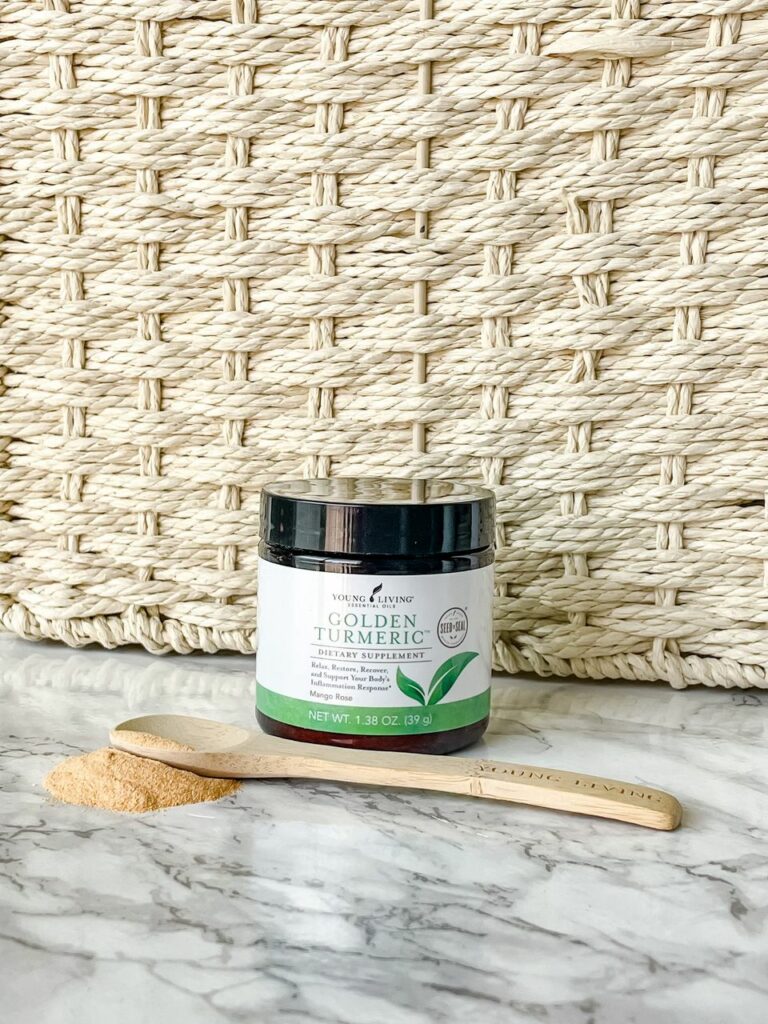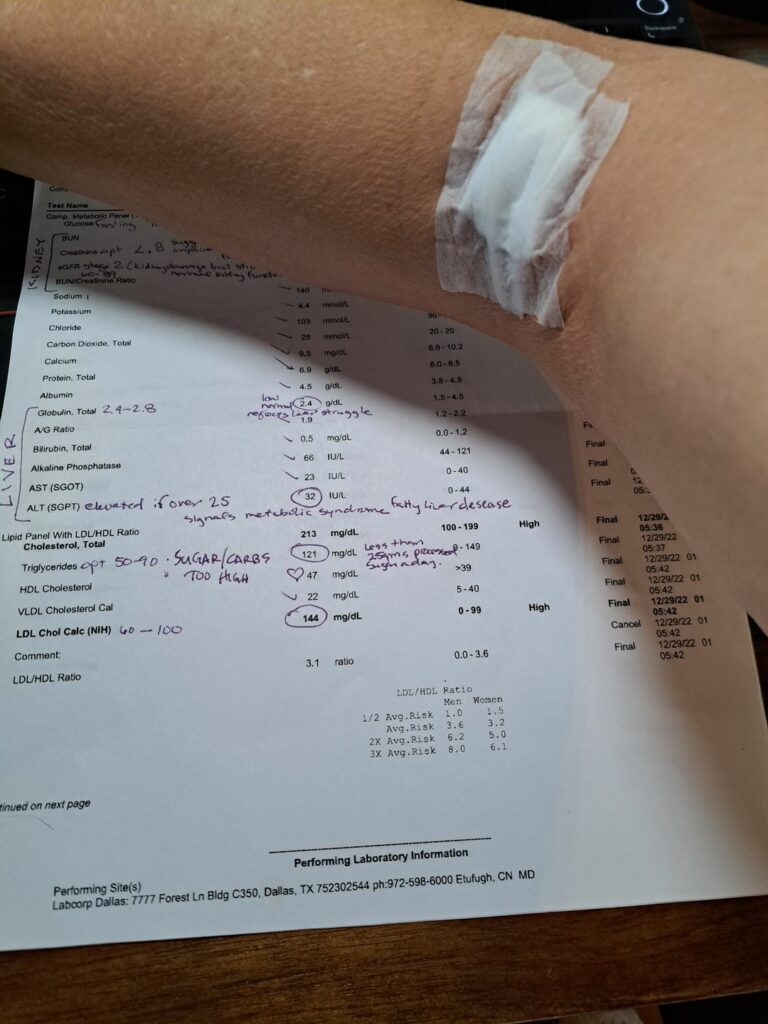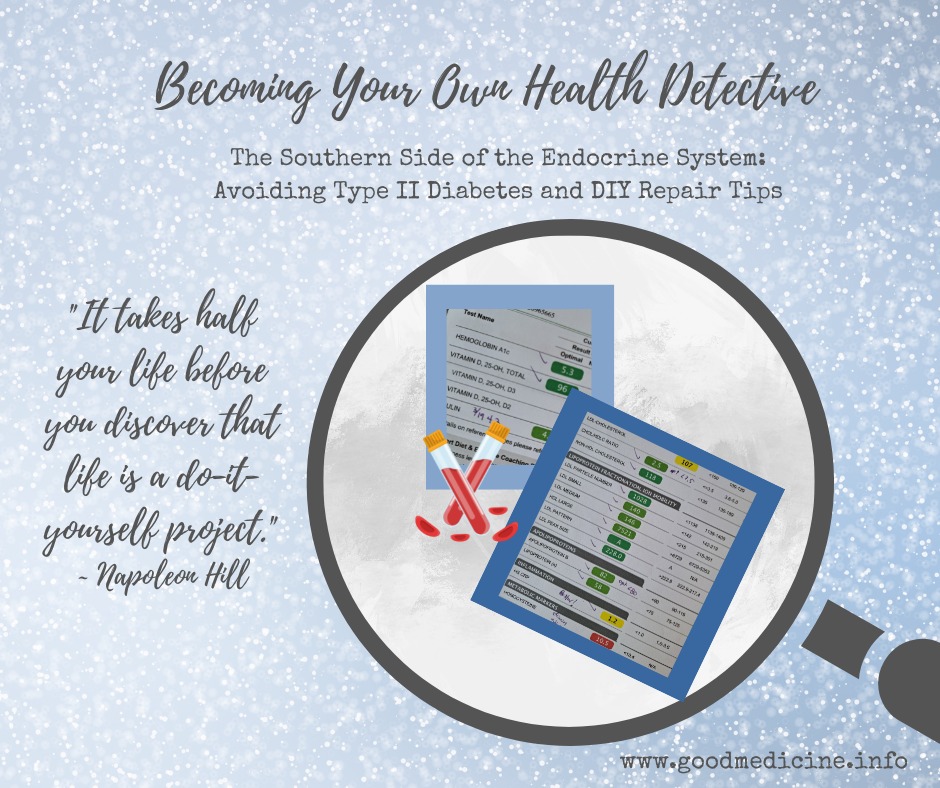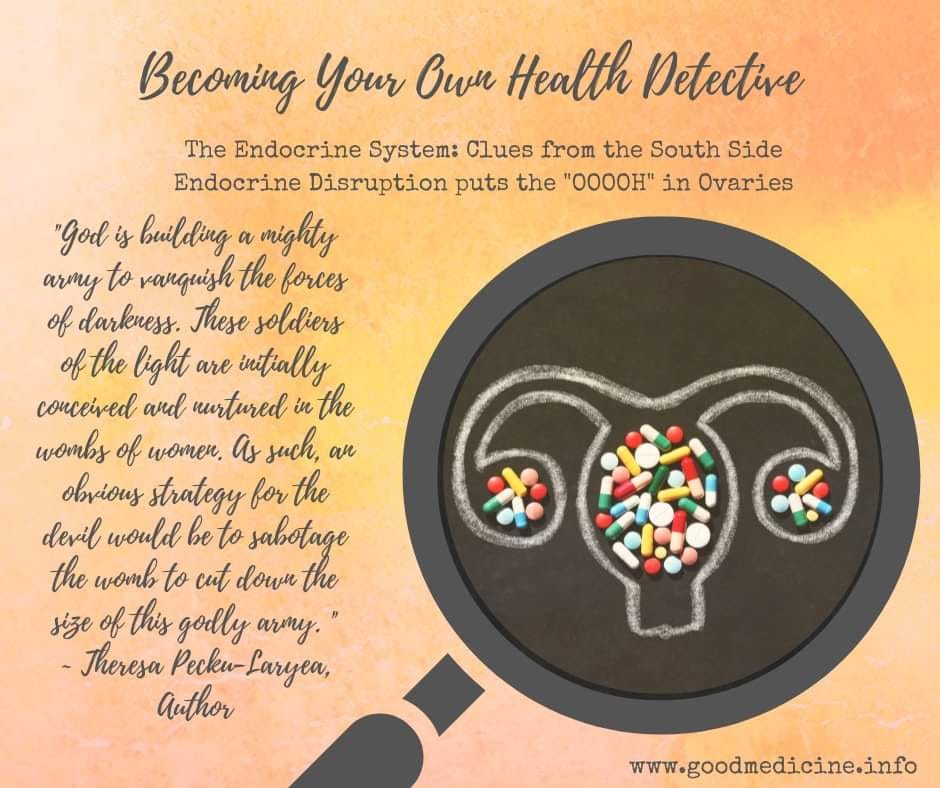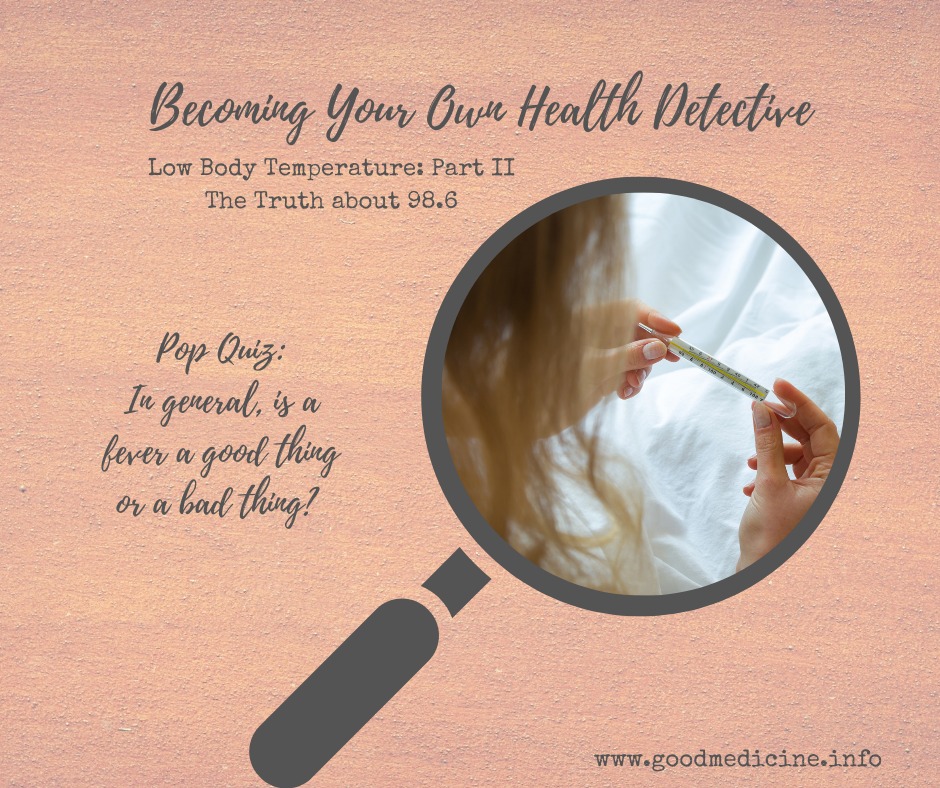Good morning friends! I realize this may not be the best time of the year



 to talk about insulin resistance…… or maybe it is!
to talk about insulin resistance…… or maybe it is!
When you go to the doctor, and they run  labs, 90% of the time they run blood glucose and nothing else unless there is a known blood glucose problem. If there’s a known problem, they will generally add in HbA1c too.
labs, 90% of the time they run blood glucose and nothing else unless there is a known blood glucose problem. If there’s a known problem, they will generally add in HbA1c too.
99% of the time, a typical Western medicine practitioner fails to run a fasting insulin test. In their defense, insurance generally won’t pay for it unless there is evidence of a problem. (Having the practitioner choose the right ICD10 code… billing code…. often rectifies this problem).
You’d be 

 to learn just how many people are headed towards insulin resistance (and don’t even know it!) with this simple $35ish dollar out of pocket test. (WELL worth the money to know what’s lurking so you can do something about it!)
to learn just how many people are headed towards insulin resistance (and don’t even know it!) with this simple $35ish dollar out of pocket test. (WELL worth the money to know what’s lurking so you can do something about it!)
I run this test myself annually to keep a finger on how well I manage my health. (The lab company I work with nationwide is having a Black Friday/ Cyber Monday sale now thru 12/1… please message me if interested in running labs).
If you are struggling with insulin resistance, here are some great studies. God gave us plants to help support healthy blood sugar, and Young Living does their research!
Turmeric: Whoa now….. 400+ times more potent than a VERY POPULAR medication at activating glucose uptake?… read the brief abstract for more info.
And then there’s this article from the American Diabetes Association: “Curcumin Extract for Prevention of Diabetes.” A 9-month study of 240 individuals with prediabetes who were either given a placebo or curcumin/turmeric.
from the American Diabetes Association: “Curcumin Extract for Prevention of Diabetes.” A 9-month study of 240 individuals with prediabetes who were either given a placebo or curcumin/turmeric.
After 9 months, 16.4% of the placebo group had full on Type2 diabetes, whereas NONE of the curcumin group did.
Additionally, the curcumin group had:
You can review this study here: https://diabetesjournals.org/…/Curcumin-Extract-for…
More to come on this topic this week!
In this eating season, it’s a good idea to know your labs….. and even if you don’t….. give your pancreas a little love with Young Living’s Golden Turmeric.
Recipe for Spiced Golden Milk Latte
1/2 tsp Golden Turmeric powder
8 oz milk of your choice
1 drop cardamom vitality
1 drop nutmeg vitality
1 toothpick swish of cinnamon bark vitality
dash of ground cinnamon if desired for garnish
Heat the milk on medium-low, then pour it into mug. Stir in the Golden Turmeric powder and add essential oils. Stir until powder is dissolved, and then top with ground cinnamon if desired. Enjoy!
To learn more about Golden Turmeric and if it may be right for you…. here ya go  : https://1602257.lifestepseo.com/…/golden-turmeric…
: https://1602257.lifestepseo.com/…/golden-turmeric…
xoxo~ liz
